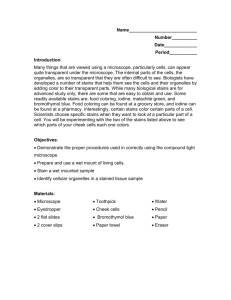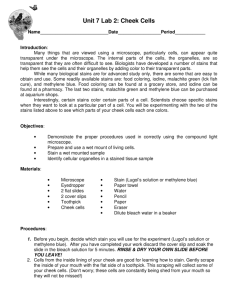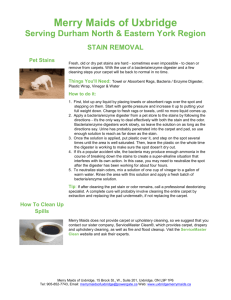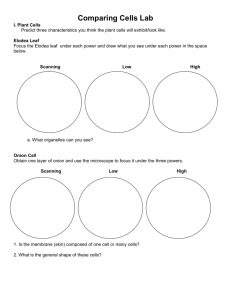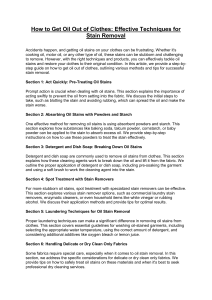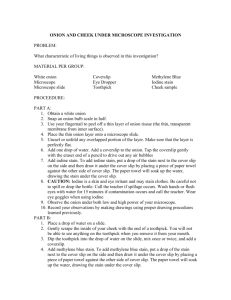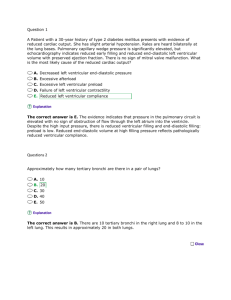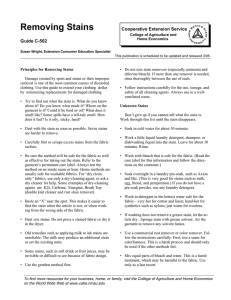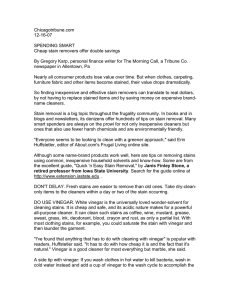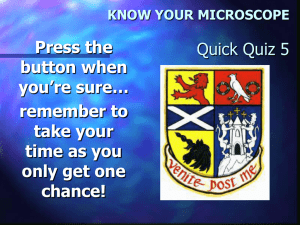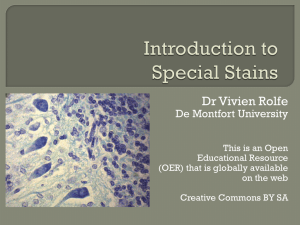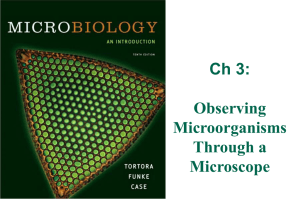Staining Cells - Museum of Science, Boston
advertisement
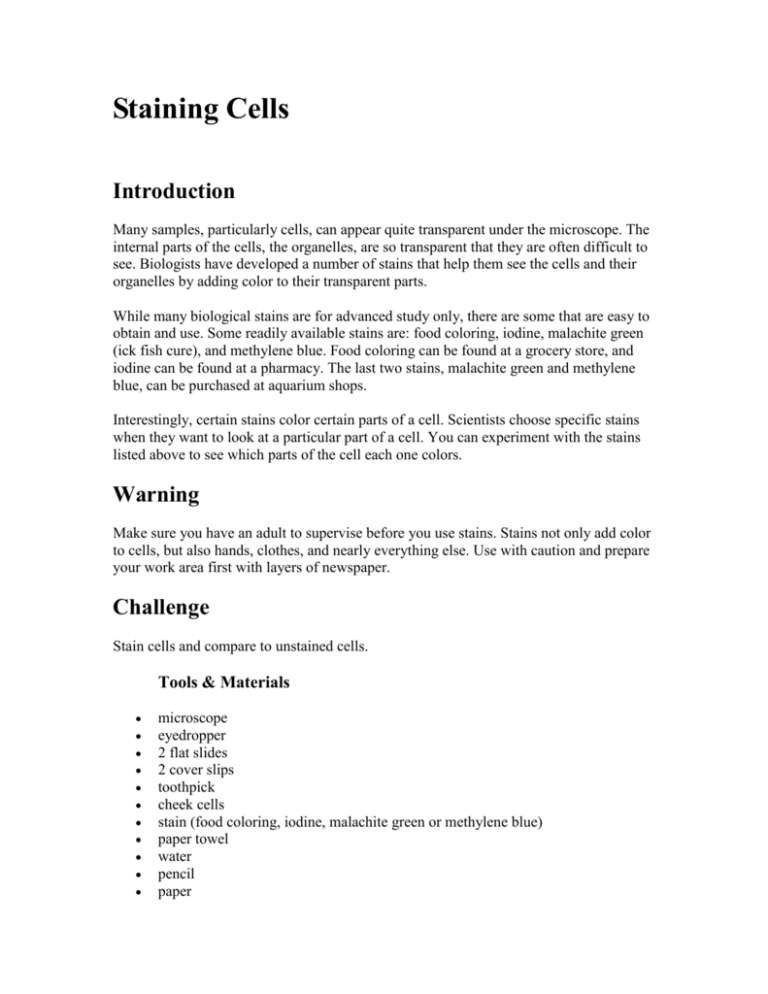
Staining Cells Introduction Many samples, particularly cells, can appear quite transparent under the microscope. The internal parts of the cells, the organelles, are so transparent that they are often difficult to see. Biologists have developed a number of stains that help them see the cells and their organelles by adding color to their transparent parts. While many biological stains are for advanced study only, there are some that are easy to obtain and use. Some readily available stains are: food coloring, iodine, malachite green (ick fish cure), and methylene blue. Food coloring can be found at a grocery store, and iodine can be found at a pharmacy. The last two stains, malachite green and methylene blue, can be purchased at aquarium shops. Interestingly, certain stains color certain parts of a cell. Scientists choose specific stains when they want to look at a particular part of a cell. You can experiment with the stains listed above to see which parts of the cell each one colors. Warning Make sure you have an adult to supervise before you use stains. Stains not only add color to cells, but also hands, clothes, and nearly everything else. Use with caution and prepare your work area first with layers of newspaper. Challenge Stain cells and compare to unstained cells. Tools & Materials microscope eyedropper 2 flat slides 2 cover slips toothpick cheek cells stain (food coloring, iodine, malachite green or methylene blue) paper towel water pencil paper eraser Instructions Before you begin, decide which stain you will use for the experiment. Cells from the inside lining of your cheek are good for learning how to stain. Gently scrape the inside of your mouth with the flat side of a toothpick. This scraping will collect some of your cheek cells. (Don't worry, these cells are constantly being shed from your mouth so they will not be missed!) Place the cells on a flat slide and make a wet mount as you did in the "Wet mounts" activity. Now repeat this procedure so that you have two wet mounts of cells from the inside of your cheek. Now you need to add stain to one slide. To add stain, put a drop of the stain next to the cover slip on the slide and then draw it under the cover slip by placing a piece of paper towel against the other side of the cover slip. The paper towel will soak up the water, drawing the stain under the cover slip around the cell. Drawing the stain under the cell is called "wicking." Look at the stained slide under the microscope. Draw what you see. Now look at the unstained slide under the microscope. Is it different? Draw what you see. Further Explorations Try using different stains and different types of cells, both plant and animal. Make drawings of what you see. Science Learning Network Home / SLN Inquiry Resources / © 1996 Museum of Science, Boston
